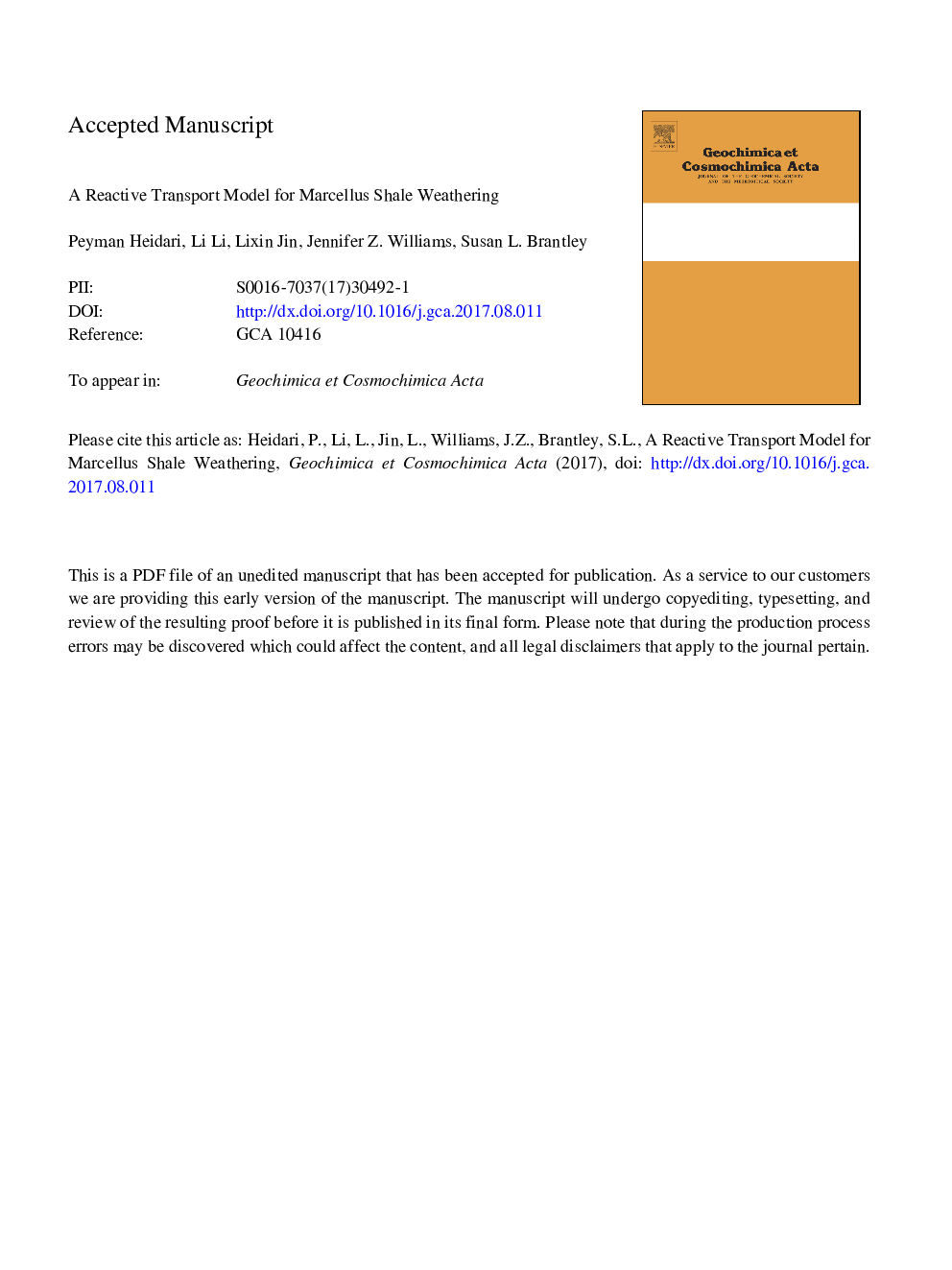| Article ID | Journal | Published Year | Pages | File Type |
|---|---|---|---|---|
| 5783099 | Geochimica et Cosmochimica Acta | 2017 | 53 Pages |
Abstract
A sensitivity analysis indicated that the most important controls on weathering include the presence of reactive gases (CO2 and O2), specific surface area, and flow velocity of infiltrating meteoric water. The soil chemistry and mineralogy data could not be reproduced without including the reactive gases. For example, pyrite remained in the soil even after 10,000Â years if O2 was not continuously present in the soil column; likewise, chlorite remained abundant and porosity remained small if CO2 was not present in the soil gas. The field observations were only simulated successfully when the modeled specific surface areas of the reactive minerals were 1-3 orders of magnitude smaller than surface area values measured for powdered minerals. Small surface areas could be consistent with the lack of accessibility of some fluids to mineral surfaces due to surface coatings. In addition, some mineral surface is likely interacting only with equilibrated pore fluids. An increase in the water infiltration rate enhanced weathering by removing dissolution products and maintaining far-from-equilibrium conditions. We conclude from these observations that availability of reactive surface area and transport of H2O and gases are the most important factors affecting rates of Marcellus shale weathering of the in the shallow subsurface. This weathering study documents the utility of reactive transport modeling for complex subsurface processes. Such modelling could be extended to understand interactions between injected fluids and Marcellus shale gas reservoirs at higher temperature, pressure, and salinity conditions.
Related Topics
Physical Sciences and Engineering
Earth and Planetary Sciences
Geochemistry and Petrology
Authors
Peyman Heidari, Li Li, Lixin Jin, Jennifer Z. Williams, Susan L. Brantley,
